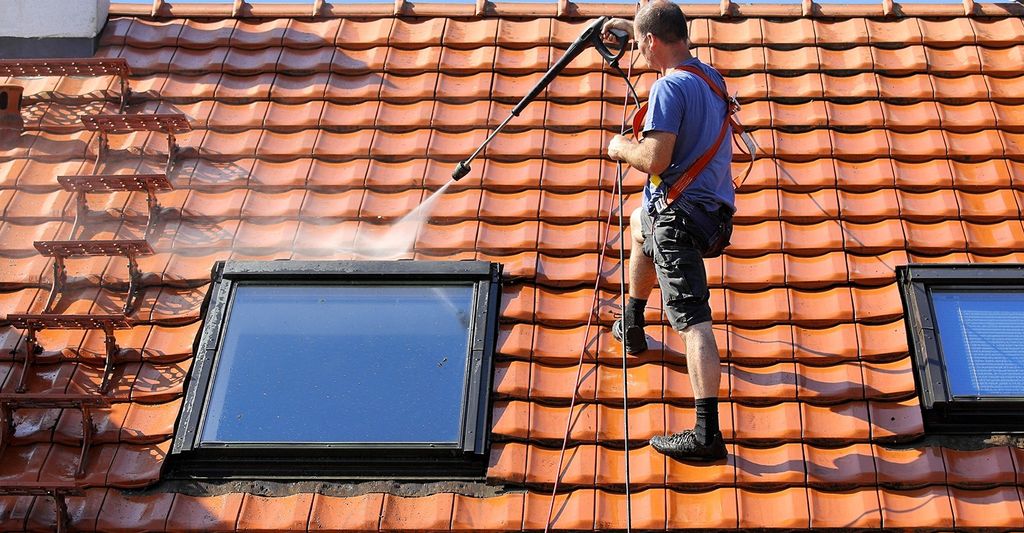Can a roof be cleaned?
Yes roofs can be cleaned, and yes, it’s a real thing. Roof cleaning may actually be a wise investment to prolong the life of your roof. Overgrowth of moss, grime, lichen or algae can all shorten the life of your roof. If you have black streaks growing on your roof, they are likely caused by gloeocapsa magma algae spores that have landed on your roof and taken up residence. Once the algae has grown into streaks, the organism has usually been growing for several months and it’s high time to have it removed. If you live in a rainy part of the country, such as the Pacific Northwest, there’s a good chance you’ll find moss growing on your roof at some point. The northern part of your roof, as well as any parts that remain shaded all day, will provide a wet, cool haven for moss to flourish. Unfortunately this water-absorbing moss can damage your shingle roof, leading to rot if not removed. Beyond roof health and function, a clean roof can boost your curb appeal and potentially boost your home’s resale value. The national average for roof cleaning costs ranges between $270 and $350, although prices can be higher depending on how large your roof is, how steep your roof is, and what type of cleaning is necessary. Typically pros use either a pressure wash or chemical wash (made with a concentrated bleach solution) to remove algae, lichen, moss and dirt.
What is the best time of year to pressure wash your house?
A warm, sunny day is the best time of year to pressure wash your house. The warm sun will be able to dry out the house after washing. You should also consider pressure washing your home after the rainy, storm season has passed. Depending on where you live, this might be in the spring, summer or early fall.
Contact the best pressure washing services and pros to determine the best time to wash your home, and schedule an appointment.
Why do I need to clean my roof?
Over time, algae, moss, lichen, dirt and even salt (if you’re near the ocean) can build up on your roof. These buildups can affect the look and function of your roof unless removed. The buildup of organic materials such as moss on a shingle roof can prevent water from sloughing off as it normally would. Trapped water can rot the roof or cause early deterioration of your shingles. Even if you don’t have a shingle roof, moss and lichen absorb water, and that wet material adds weight and stress to your roof — as well as providing a home for insects and other pests, and collecting dirt. For reflective, cool roofs that redirect heat away from the home, algae and moss growths can hamper their ability to deflect the sun, which can affect utility bills. Visually, moss, dirt and algae growths on a roof can have a negative effect on perceived home value and curb appeal. For example, black algae streaks on your roof may cause a potential homebuyer to assume that the roof might need repair or replacement, when it only needs to be cleaned.
